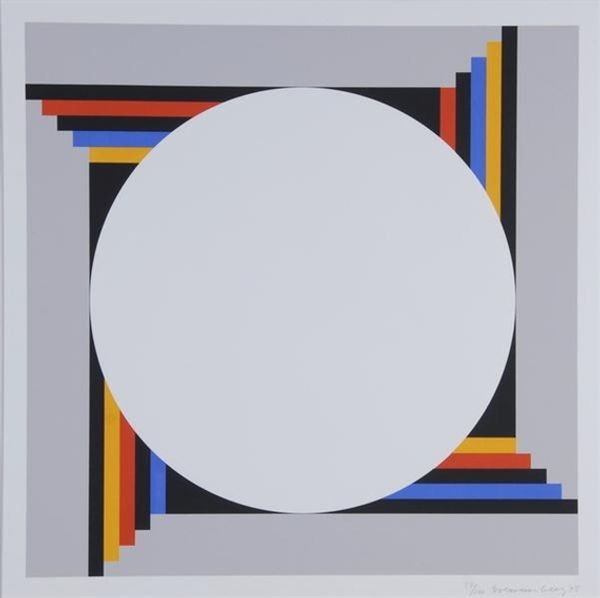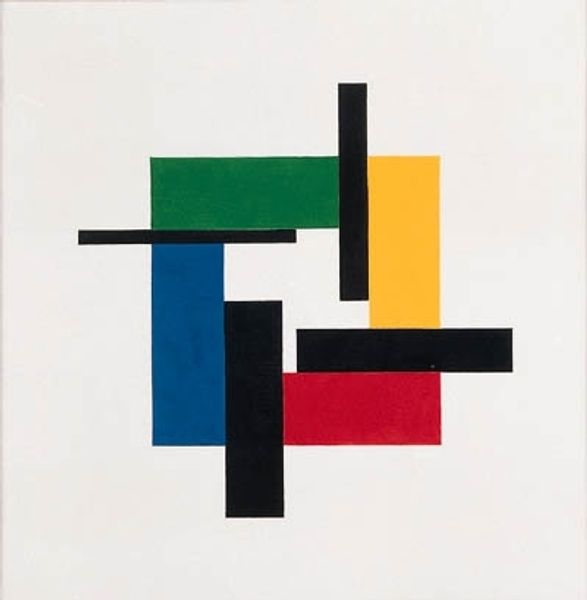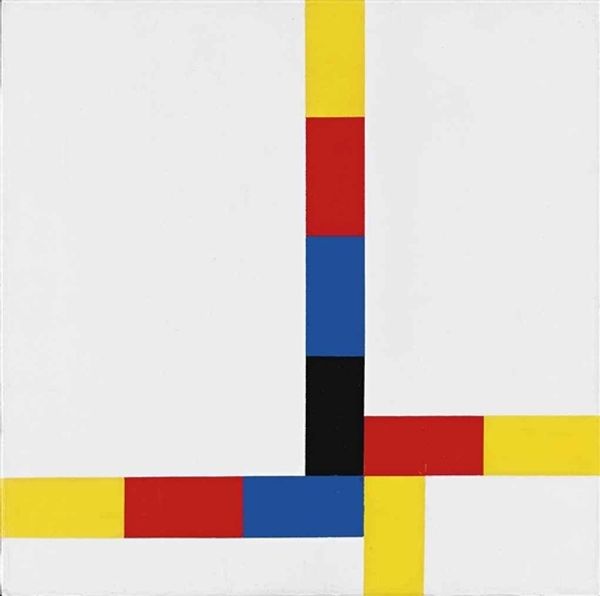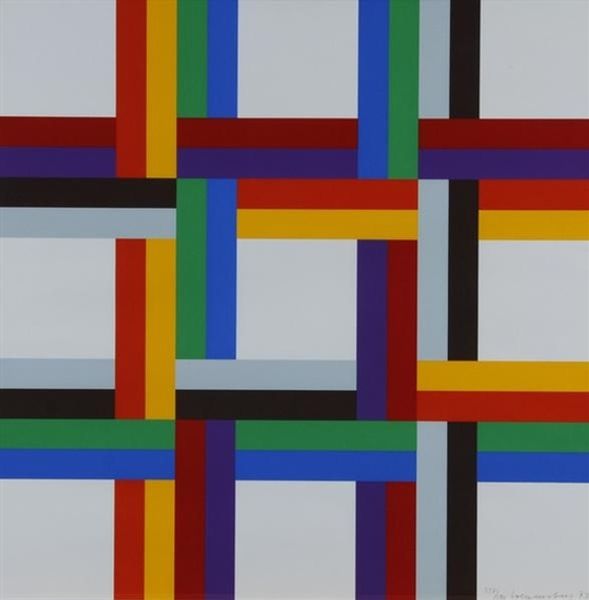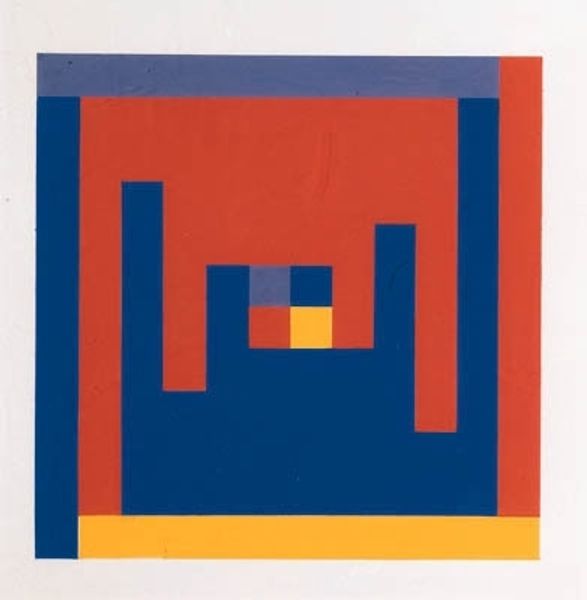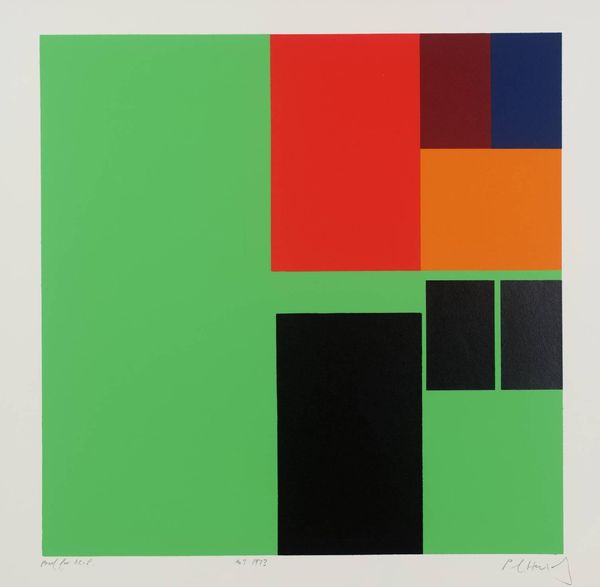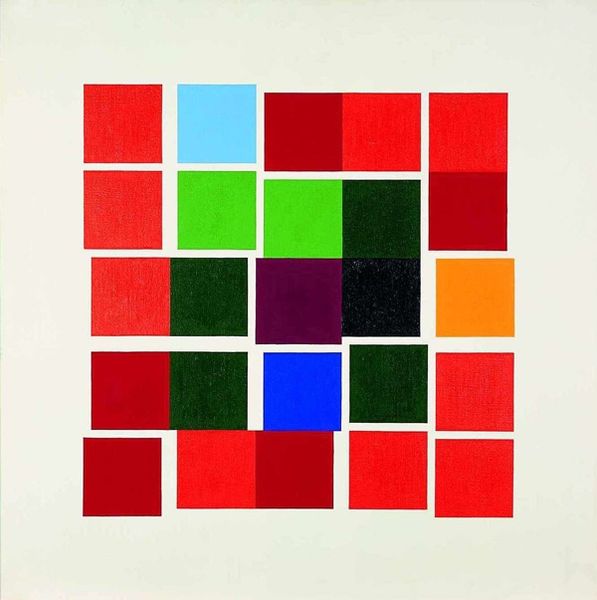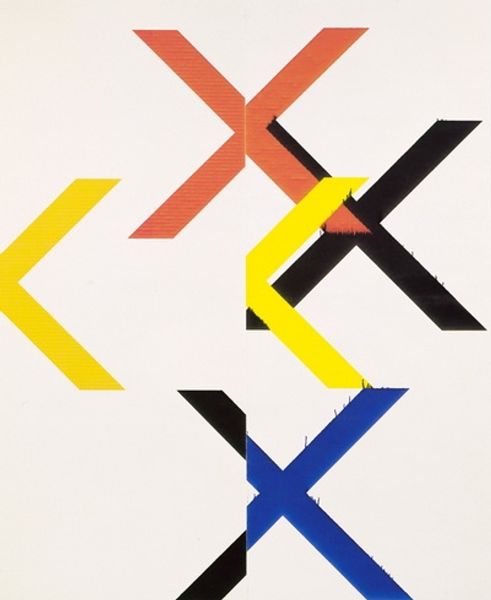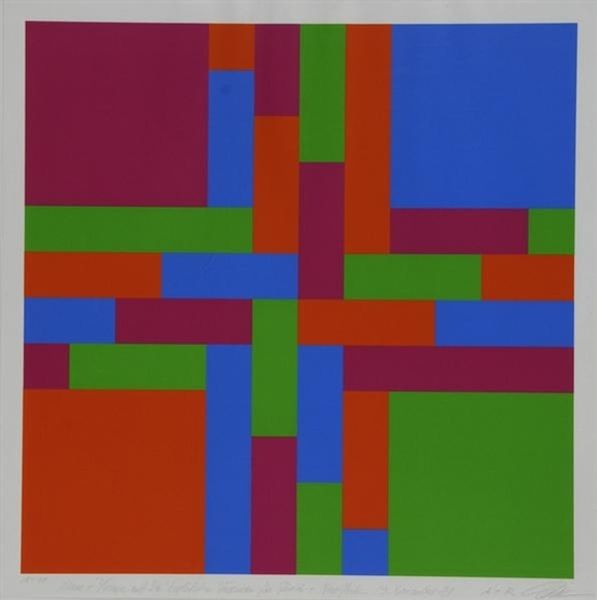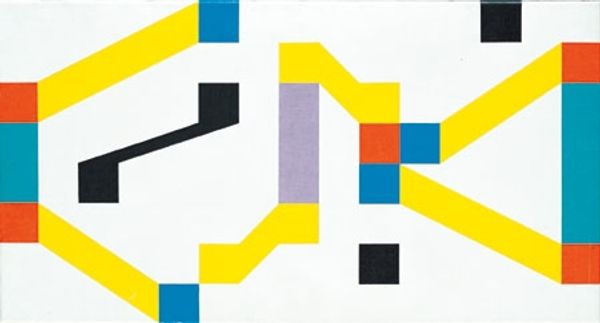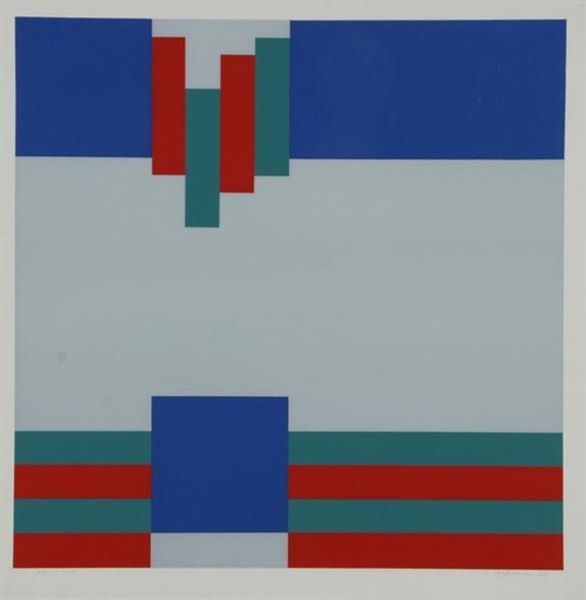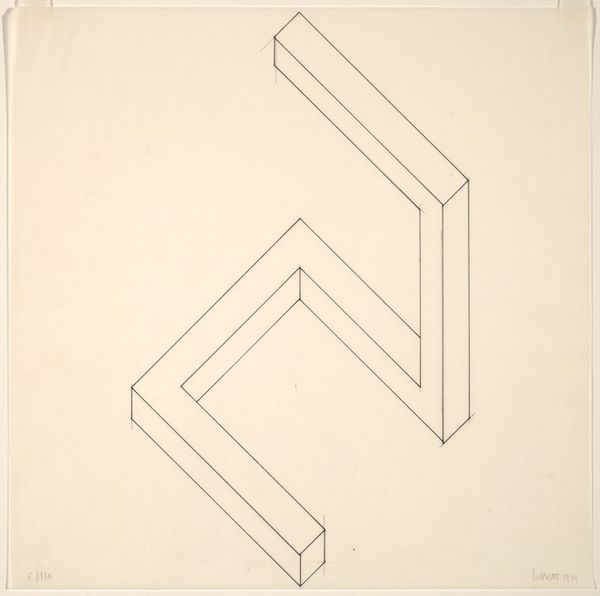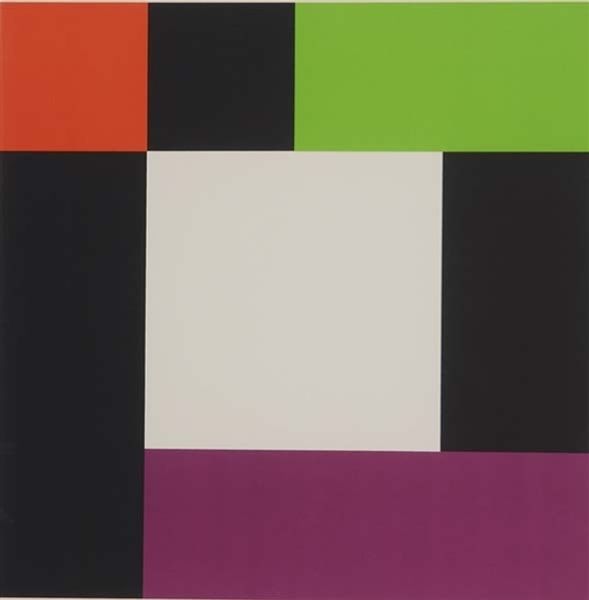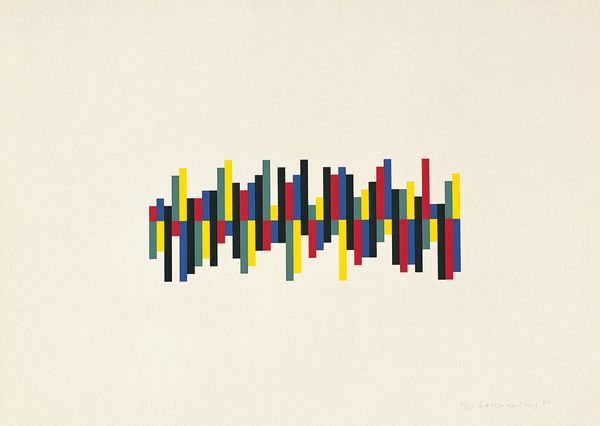
drawing, coloured-pencil
#
drawing
#
coloured-pencil
#
geometric
#
geometric-abstraction
#
abstraction
#
line
#
modernism
Copyright: Verena Loewensberg,Fair Use
Curator: Looking at this intriguing drawing, "Composition" from 1965, created by Verena Loewensberg, what’s your immediate take? Editor: The drawing feels clean and very direct. The lines, the colour, the geometry. A very refreshing feeling! Curator: Well, Loewensberg, closely involved with the Zurich Concrete movement, was interested in removing all traces of expression to highlight the materiality of color and line. This approach moved away from subjective artistic expression and invited others to engage more with the pure aesthetic experience of color and line on the surface. The choice to use colored pencils too brings attention to the process, right? It’s humble and familiar. Editor: Absolutely. Notice how the rectangular segments interplay, each meeting another; this is an orchestrated geometry that lends itself to close visual examination of the composition. And yes, the materiality is also there, if muted. But what I think stands out is how that intersection of color gives us so much. Loewensberg masterfully creates a sense of depth and layering, that belies the flat medium. Curator: Indeed. And considering the historical context, just after World War II, art began moving toward embracing such geometric abstraction, it mirrored a desire for order and rebuilding, where pure shapes could express the idea of rationality over the chaos and uncertainty brought by social upheaval. And coloured pencils made it accessible! Editor: From a purely structural perspective, observe how the placement of vertical and horizontal rectangles leads our eye across the picture plane, giving the drawing motion despite its rigidity. The limited but deliberate palette invites us to discern not just their difference but what they might have in common and where the eye finds rest. Curator: It shows how Loewensberg aimed to show relationships— between color, between shape, between order and variation through this arrangement. It is meant to bring you back to a certain materiality, by stripping everything down. Editor: It brings it full circle, doesn’t it? From surface to symbol and back to material awareness. A quietly powerful statement with subtle means. Curator: Exactly. I believe this particular “Composition” continues to demonstrate the complex role that the language of geometric form can play in how we perceive postwar rebuilding, the process behind art and everyday objects, and of course, visual perception.
Comments
No comments
Be the first to comment and join the conversation on the ultimate creative platform.
